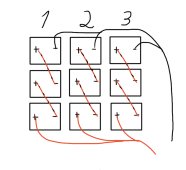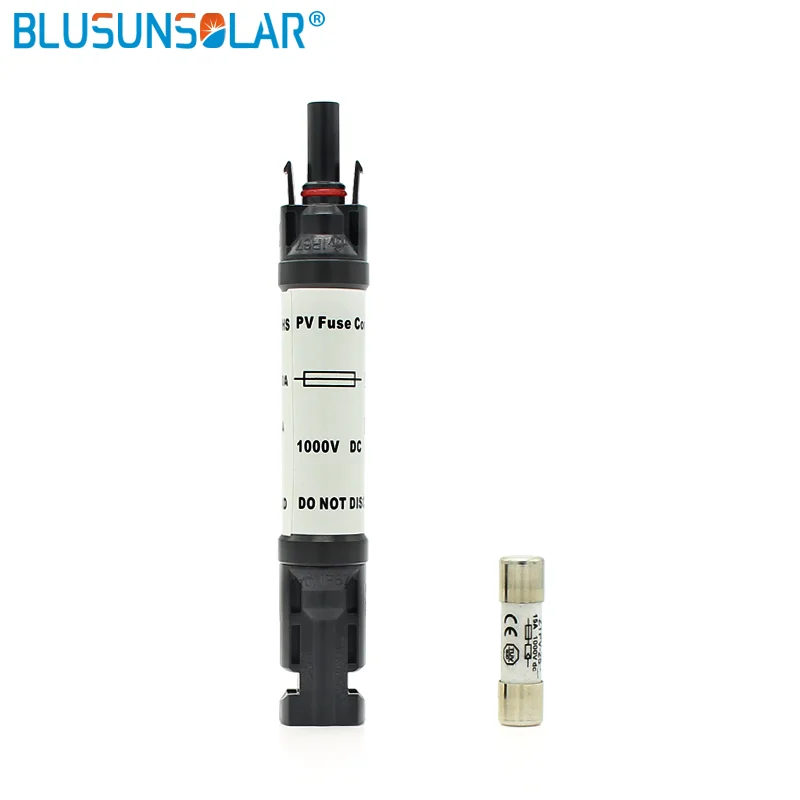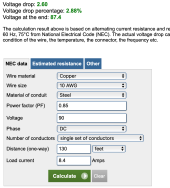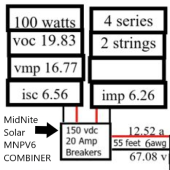AZ Off-Gridder
New Member
- Joined
- Nov 25, 2021
- Messages
- 139
Here is my 48V solar system.
Inverter: MPP LV6048 6kW
2 PV inputs in this unit. 4,000w max per input. Max PV input 145vdc each input. MPPT range 60-110vdc. Max solar charging current 80a per input.
Solar panels: (18) 250w VPM 30.3v. Max power current 8.27a
Planning to wire these panels in 2 separate sets of 9 wired as S3P3. Below is a diagram of only one half. There would be one more identical to it as 4,5,6. Each set would feed the inverter separately. (As this inverter is technically 2 inverters side by side.)
Wiring: As shown in the diagram, wired into a series string of 3 panels, and then 3 strings paralleled. @ 90.9v and 24.81a. I plan to use MC4 3 to 1 pigtails to connect into parallels.
Questions: Does this make sense?
Am I wiring them correctly?
Will it function safely within the inverters parameters?
MUCH THANKS to the community!!!
Inverter: MPP LV6048 6kW
2 PV inputs in this unit. 4,000w max per input. Max PV input 145vdc each input. MPPT range 60-110vdc. Max solar charging current 80a per input.
Solar panels: (18) 250w VPM 30.3v. Max power current 8.27a
Planning to wire these panels in 2 separate sets of 9 wired as S3P3. Below is a diagram of only one half. There would be one more identical to it as 4,5,6. Each set would feed the inverter separately. (As this inverter is technically 2 inverters side by side.)
Wiring: As shown in the diagram, wired into a series string of 3 panels, and then 3 strings paralleled. @ 90.9v and 24.81a. I plan to use MC4 3 to 1 pigtails to connect into parallels.
Questions: Does this make sense?
Am I wiring them correctly?
Will it function safely within the inverters parameters?
MUCH THANKS to the community!!!






